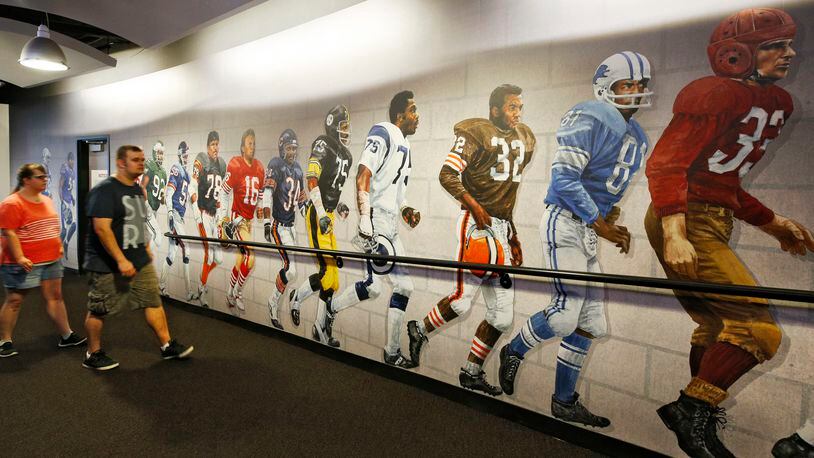Here are five suggestions for strengthening America’s game for now and the future:
1. Expand the regular season – but keep it 16 games.
Confused? Don’t be.
There’s been talk off and on about going to an 18-game regular season and chopping two games off the preseason, but that’s not necessary. The season is long enough. No need to add even more wear and tear to players’ bodies.
They already use 17 weeks to play 16 games. Why not go to 18 to play 17?
That would give the networks get another week to broadcast real games (and subsequently pay league owners for the privilege) without increasing players’ workload much, if at all.
More time for rest in the middle of the season should be a good thing for their health and the quality of play, too.
Sports Today: Blue Smith a Buckeye, Reds rotation positives, Hue Jackson was right & NFL doesn't understand football https://t.co/4QrBIF1JM5 pic.twitter.com/Vz09uPwJ4T
— Marcus Hartman (@marcushartman) August 28, 2017
2. Shrink the preseason.
This goes along with No. 1.
The preseason opener always brings a certain level of excitement (at least for a few minutes) even though established players don’t play much. Because whose juices don’t get going simply because football is back, right?
The third game is the dress rehearsal, and the fourth game generally includes only players still trying to make the team.
So tell me again what the second game is for?
Looking ahead: 5 Bengals thoughts as preseason winds down https://t.co/OQH448ygUo
— Marcus Hartman (@marcushartman) August 29, 2017
Let’s use the first game to break the ice, hold the “dress rehearsal” in week two and use the third game to sort out the rest of the roster.
There’s already a tacit understanding starters don’t need to play much at all in the preseason to get their sea legs.
3. Expand regular season active rosters.
The 53-man rosters in the NFL are ridiculously small considering the rigors of the regular season and the sum of quality of players available.
Teams should be allowed to have at least 60 active players, both to spread out some workloads and to aid in player development.
Allowing teams to keep more of their players would also better reward the teams who are the best at drafting and developing talent.
4. Set a weight limit of 300 pounds or lower.
This would also be good for players’ health and the quality of the game.
While the 300-plus-pound lineman has become the rule rather than the exception in the NFL, that is still a relatively recent development for a league that began in 1920.
Bulk for the sake of bulk is counter-productive. Players on each side of the ball have gotten bigger, more to keep up with the trends than anything else -- not because you have to weight 320 pounds to play the game but because there’s a need to be able to anchor against other guys who weight that much.
>>>READ MORE at Marcus Hartman’s Cus Words Blog
As a result, we have a lot of amazing athletes carrying around a lot more weight than they need to.
A return to leaner linemen would open up the running game because it would make more complex blocking schemes easier to execute.
Speed trap, anyone?
That would give the pro game a shot of what college got a few years ago when older running concepts revitalized offenses at that level.
5. Overhaul just about everything to do with the passing game.
As running has gotten harder with defenders getting bigger and faster, the rules have made throwing it easier.
I’m not sure this is a good thing overall because at its core football is a game that is designed to be physical, and nobody wants to watch a glorified seven on seven on Sunday afternoons.
So let’s eliminate the illegal contact rule and instruct officials to treat pass interference like the NBA does fouls: No flags unless someone gains a clear advantage through contact. Nothing ticky-tack. Let ‘em play and whatnot.
Too many drives are extended by insignificant illegal contact and iffy pass interference calls.
RELATED: 7 local connections to the Pro Football Hall of Fame
Forget all this garbage about what constitutes a catch, too. The league has made this much more difficult than it needs to be.
Does the receiver have control of the ball? Have his feet hit the ground? It’s a catch. No football moves required. No concern if the ball is moving. Don’t care what happens after he has reestablished himself on planet Earth. A catch is a catch is a catch. Soon enough you’ll forget it was ever any other way.
Now, who’s ready for some football?
About the Author
